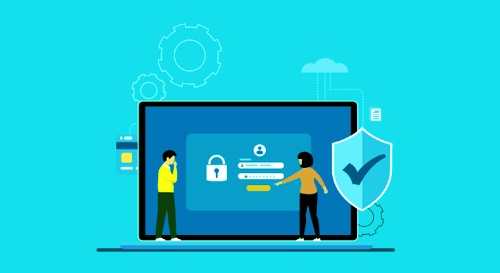What Is DKIM And How Does It Work?
As email has become one of the most prevalent forms of communication, ensuring the authenticity of emails has become a vital concern for businesses of all sizes. Email authentication has continually evolved, with DomainKeys Identified Mail (DKIM) established as one of the most secure email authentication methods. DKIM offers businesses the ability to protect their email from spoofing while also improving email deliverability.
However, not everyone is familiar with this protocol, and deciphering the technical terms can be challenging for non-technical individuals. In this blog post, we’ll delve deep into DKIM and what it does. We’ll discuss how this authentication system works, its benefits, and its limitations. We’ll also explore the technical aspects of implementing DKIM for your email infrastructure, including how to set up policies and best practices.

From simple explanations to technical jargon, this post is a one-stop destination for everything you need to know about DKIM.
What Is DKIM?
A DKIM (Domain Keys Identified Mail) is the method email authentication uses to tag messages to make sure that they are genuine and sent by a party who owns the domain. This is done by adding a digital signature to the bottom of the email.
The receiver (or receiving system) can determine whether an email is using a valid DKIM signature based on whether the signature was created on the server or on the end user's computer. Most DKIM signatures are usually undetectable to users. Validation is done at the server level.
Using the DKIM standard will boost your email deliverability. Should you use a DKIM record with DMARC (and even SPF), your website can be protected against malicious emails sent within the context of your domain. Even though DMARC and DMARC Analyzer both rely on SPF and DKIM, these attributes work best together. To acquire more information about DKIM, visit duocircle.com.
Domain Keys Identified Mail Is The History Of Domain Key-Value Pairings Identified Via E-Mail
DKIM, a market established by combining two prior specifications known as Domain Keys (created by Yahoo) and Identified Internet Mail (from Cisco), was created in 2004. It developed into a highly accepted authentication mechanism that was registered as an RFC by the IETF. All main internet services (like Google, Microsoft, and Yahoo) check incoming mail for DKIM signatures.
DKIM Is A Type Of Email Encryption
The DKIM signature generated by the MTA (Mail Transfer Agent) has a unique string of characters called Hash Value. This value is stored in the listed domain. After receiving the email, the receiver can verify the DKIM signature using the public key registered in the DNS, which it uses to decrypt the Hash Value in the header and calculate a new hash value.
DKIM And DMARC
DMARC is based on the DKIM standard and SPF. Together they are the best practice to avert email spoofing and make your messages more trusted. DMARC only works if you have set up both SPF and DKIM. When you follow a correct procedure, you can use the DMARC Analyzer tool to receive DMARC reports which contain detailed information about who has sent mail for you.

How DKIM Authentication Works
DKIM is a system used in email that allows servers to authenticate the sender potentially working with signed certificates. It stores various important headers, like From, To, Subject, and Date, in the key of the server and attaches it as an attachment in the receiving server.
The public key that serves as an identifier in the PUBLIC DNS region of the domain name to which the posting refers, is featured in the HTTP request. By using the public key signed in the supplied message, your audience can determine that the posted impression was sent as it was sent, without interference.
In the end, DKIM is an important email authentication protocol that helps prevent email spoofing and phishing attacks. By implementing DKIM, email service providers and businesses can increase their email deliverability rates and protect their brand reputation. While DKIM can seem complex and challenging to set up, there are many resources available to help guide you through the process. Overall, understanding and utilizing DKIM is an essential step towards ensuring the security and authenticity of your email communications.